Guinea fowl - introduction
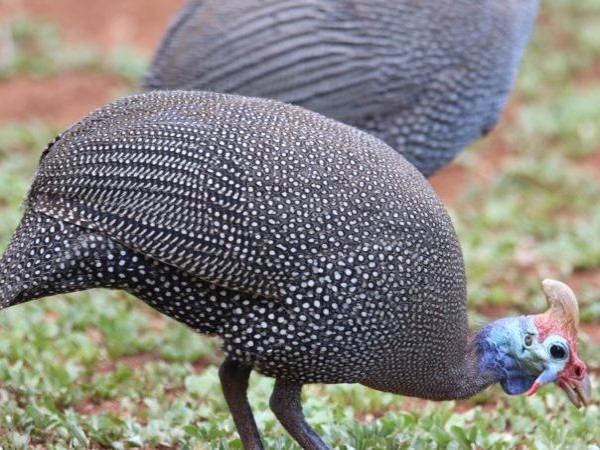
“Nganga: These lovely spots are just the thing for hiding in the shadows and grass.” – Barbara Knutson, from ‘How the Guinea Fowl Got Her Spots’
Contents
What are guinea fowl?
Guinea fowl are a species of poultry kept around the world for their meat, eggs and feathers. They can be striking birds with attractive plumage and a reputation for being rather more independent or ‘wilder’ than other types of poultry. They’re also extremely noisy and, for that reason, are often kept as guard animals.
Guinea fowl originate in Africa, where they are found in a range of habitats. They prefer dry, warm, climates with a mix of cover and open space including forest, scrubland and grassland. Like chickens, they’re naturally omnivorous – their diet includes seeds, berries, insects and small mammals and reptiles. Guinea fowl tend to run rather than fly, though they’re adept at fluttering straight upwards and will roost high in trees. They are gregarious, living in large flocks and roosting communally. They mate for life, though a male may mate with several females if there’s a shortage of males.

A wild guinea fowl in South Africa (pic: New Jersey Birds, creative commons).
What are the benefits of keeping guinea fowl?
Like most poultry, guinea fowl allow super-low food miles, and provide ethical meat and eggs in your back garden. However, these guys are perhaps more appropriate for someone with a large garden and no neighbours. They can be incredibly noisy, and will quickly alert you (or your chickens) to any intruders or predators. They have even been know to gang up on predators that appear during the day. For this reason they are sometimes kept as guard animals with other poultry or sheep. In countries where snakes are an issue, guineas will attack and kill them on sight.
If you want a self-sufficient bird, guinea fowl may be the poultry for you. They seem, in many ways, less domesticated than other poultry; if allowed space to roam they will forage much of their own food and happily roost in trees. On the other hand, they will also hide their eggs, tend to wander off, prove difficult to tame and refuse to come into their house at night.
Guinea fowl don’t yield as much meat as a chicken, but can provide a decent meal; plus ‘jumbo’ strains have been developed too. Their meat is often likened to chicken with a slightly gamier flavour. It is seen as a delicacy; you may be able to find a market for it with local restaurants, although demand may not be as reliable as with other slightly more exotic poultry, such as quail.
Although they’re more often kept for meat, guineas will lay prolifically through the summer, producing around 100 eggs a year. Their eggs are the size of a bantam egg (i.e. smaller than your average chicken egg) but are more strongly flavoured, with a richness similar to a duck egg. You can use them in any of the ways you would use a chicken egg; their richness and flavour make them particularly good for baking with.
Guineas are sometimes kept for pest control in gardens and orchards, and they are particularly fond of ticks. In general, although they will have some impact, they will scratch less and eat fewer of your plants in the garden than a chicken would. A bonus income can be made from selling the attractive guinea feathers, used to make fishing flies and for craft projects.
The distinctive sound of guinea fowl.
What can I do?
Getting started
Some people love guinea fowl, finding them pretty, entertaining and endearing; while others find them noisy, disruptive and difficult to manage. Given these extremes, it might be an idea to visit someone who keeps them before making up your mind. Once you’re sure that they’re the bird for you, have a think about how you want to manage them. Do you want to take advantage of their wildness and self-sufficiency – allowing them to free range, forage for their own food and roost in trees? If so, are you willing to accept the losses to predators this might entail? Or do you want to curtail their freedom a little in the interests of keeping them all alive?
Guinea fowl are gregarious birds evolved to live in large flocks, so consider getting at least 5 or 6. They can happily live in mixed-sex groups although, if you end up with more males than females, you may want to keep an eye on aggression levels in the breeding season and be prepared to get rid of the surplus males. If you want fertile eggs you should have no more than 5 females per male.
There are a few different colours of guinea fowl, but not lots of different breeds to choose from, as there are with chickens. There are a few strains that have been bred as table birds, so if you mainly want to produce meat it may be worth seeking out one of these. It’s usually best to get your guinea fowl as hatching eggs or chicks, (known as ‘keets’). Mature birds will be difficult to tame, less likely to settle and more likely to roam, and almost impossible to train to roost in a particular place.

4-day-old keets in a brooder (pic: Guinea Fowl Flock, creative commons).
Guinea fowl tend to make unreliable mothers, but keets can be hatched and raised by a broody hen or turkey. Some people choose to raise their guinea fowl using a broody hen and ensure there is a chicken chick in the brood also. The thinking behind this is that the guineas will then behave in a more chicken-like manner; they will lay their eggs in nest boxes and willingly go into their house at night. If you’re considering keeping your guineas with hens this trick may also help integrate them into the flock and help prevent bullying of the chickens by the guineas.
If you decide to do it yourself, hatching and raising keets is not hard to do with a little research and is similar to hatching and raising chicks. You’ll need to buy an incubator and a heat lamp or an ‘electric hen’. You’ll need an indoor space for the keets until they’re ready to go outside, at around 6-8 weeks depending on the weather.
Once your keets do go outside, or once they arrive if you’re buying older keets, keeping them in an enclosed run initially will protect them from predators and may prevent them roaming off before they have become accustomed to thinking of the area as ‘home’. It will also make it much easier to train them to come to roost in a house in the evening.

Guinea fowl roosting in a tree (pic: Mister-E, creative commons).
Housing
Convincing your guinea fowl to use their house at all may be your first problem! You’re most likely to have success if your provide them with a high place to roost. Depending on numbers this may be high perches in a large shed, or a smaller ‘loft’-type house raised off the ground. The higher the roosting place you provide, the more likely they are to use it. Guineas will fly vertically upwards onto perches, and you can place intermediate perches lower down to enable them to reach the high ones. Other than this their house needs to be dry and draught-proof. It should also have a wide entrance, or multiple entrances, otherwise submissive guineas may be reluctant to enter and will try to roost elsewhere. Guineas don’t require nest boxes – they’d rather hide their eggs in the dense undergrowth for you to hunt for!
If you want to keep your guinea fowl fenced in, you’ll need to clip their wings and have fences at least 2m high. Fencing them in can be a way of restricting their roosting options and encouraging them to use their house. However, guineas dislike being restricted and their pen should be large enough to allow them plenty of space to run around and forage. The pen should also have places for them to shelter and hide and branches for them to perch on.
If your guineas are entirely free-ranging and -roosting there should still be places they can shelter in poor weather, both on and off the ground. You should also consider whether they have roosting places reasonably inaccessible to foxes e.g. tall trees. But bear in mind, guineas are not known for their sensible choices and may well choose to roost on your nice flat garage roof rather than safely in the trees.

Guinea fowl enjoying a climbing structure in their pen (pic: Guinea Fowl Flock, creative commons).
Feeding
Keets should be fed on turkey or game bird feed as these meet their protein requirements. They can be given starter crumbs until 6 weeks, then grower pellets until around 10 weeks, or until slaughter for meat birds. After this the adult birds will be fine on ordinary layers pellets, supplemented with some greens. You may well find that free-ranging guinea fowl forage most of their own food and only need supplemental feeding in the winter.
It’s possible to buy organic and/or soya-free compound feeds, but you can also mix your own feeds using ingredients such as seeds, grains and meal worms. This is particularly worth considering if your birds are foraging a large part of their diet, so you’re not trying to meet all of their nutritional needs. Mixing your own feed can allow you to choose more sustainable ingredients and save money. As with most poultry, guinea fowl should have access to fresh water and grit at all times, and layers should have a source of calcium (e.g. oyster shell).
Health
Guinea fowl tend to suffer less from health problems than chickens, although they’re susceptible to the same internal and external parasites. They need a dust bath to help them control external parasites such as lice and mites. You can either provide a box full of dry soil and sand, or a covered area where they can dig their own dust bath. Adding diatomaceous earth to the dust bath can help prevent parasites. If the guinea fowl do suffer from lice or mites you can add lice powder to their dust bath; this is far more effective and less stressful to the birds than trying to apply it directly yourself.

Guinea fowl hen with a nest of eggs (pic: Calistemon, creative commons).
As with chickens, red mite can be a problem in guinea fowl. If you have a house for your birds the mites will live in the house and attack them at night. You can prevent and treat red mite by regularly cleaning the house with a pressure washer, special detergent and/or a steam cleaner. Pay special attention to cracks and crevices. Afterwards you can dust the house with diatomaceous earth or a mite powder (organic products are available). If you begin to lose the battle with red mite, you may want to consider buying a plastic house for your birds. Plastic houses don’t provide the same hospitable habitat for the mites.
As with chickens, it’s generally recommended to treat your guineas for internal parasites at least twice a year. You can reduce the chances of serious infection by clearing up their droppings once a day and by pasture rotation if you have the space. These solutions aren’t so practical with free-ranging guinea fowl, but birds with a large area to roam in will be less susceptible to parasites.
If you want to avoid chemical wormers, and avoid contributing to the problem of resistance to medications, you can perform a faecal egg count (FEC) on them to check if they need to be wormed. You can do this yourself if you have a microscope, or you can buy a kit and send off a sample. This website has a detailed tutorial on how to conduct FECs, including a list of the equipment needed and images of parasite eggs found in poultry.

A shelter under which birds can dust bathe (pic: Guinea Fowl Flock, creative commons).
Keeping guinea fowl with other poultry
You may want to keep your guinea fowl as guard animals. If you do, be aware that bullying among guinea fowl can be more severe than among chickens, and can be a particular problem when new animals are introduced. Keeping the different species together is more likely to be successful in a free-range system where there is plenty of space. Luckily this is also the situation when you are most likely to need a guard animal. Guinea fowl may pick on cockerels and cocks in particular, so avoiding keeping these with your flock may help, as will reducing the number of male guinea fowl. If keeping guinea fowl with chickens, it’s also advisable to keep a particularly close eye on parasite levels (see above). Guinea fowl carry the same parasites as chickens but tend to be more resilient, so they may display no symptoms while providing a source of infection.
Meat production & slaughter
Guinea fowl are usually slaughtered at 12-14 weeks for a milder tasting meat and at around 20 weeks for a more flavoursome meat. They have a reputation for being one of the easier species of poultry to pluck. They’re usually butchered straight after slaughter like chickens but, as they’re also considered game birds, you may want to experiment with ‘hanging’ them for a few days as you would a pheasant. As guinea meat is a drier meat than chicken, recipes for pheasant may work better for cooking a guinea fowl.
It’s legal to slaughter guinea fowl at home for consumption by yourself and your immediate family provided it’s done humanely. Guinea fowl are on a level with chickens when it comes to ease of slaughter – if you can catch them! Their wilder nature means extra care needs to be taken when catching and handling them to ensure they don’t become stressed. It’s advisable to get the help of an experienced person or to attend a course on humane slaughter. See the Humane Slaughter Association for more information. Plucking and butchering are not difficult skills to learn and there are many online articles and videos to help you with this process.

Guinea fowl egg (pic: bert_m_b, creative commons).
For the smallholder, supplying small numbers of birds directly to consumers or to local retailers, it’s also possible to slaughter and process your birds on farm, although you must register with your local authority. If you plan to produce meat for sale and you slaughter the birds yourself, or send them to a slaughter-house but take on the butchery yourself, you’ll need to follow hygiene regulations and have your premises inspected by Environmental Health on a regular basis. Contact the Food Standards Agency for further information.
Paperwork and regulations
You have to register with DEFRA and standard regulations apply if you keep more than 50 birds (including other types of poultry). There are no regulations for people keeping fewer than 50 birds other than the general rules and regulations covering animal welfare. If you keep fewer than 50 birds you can sell your eggs directly to consumers without being registered. This includes selling eggs from your home, door-to-door, or at a local market. If you sell at a local market you must display your name and address, a best-before date and advice to keep eggs chilled. You cannot sell eggs through a shop, or grade them by size without registration.
Specialist(s)
Thanks to Lesley Anderson of Permaculture Scotland for information
The specialist(s) below will respond to queries on this topic. Please comment in the box at the bottom of the page.
 Andrew Nelson has kept guinea fowl for over 20 years, he has two dozen birds which roam in a couple of acres in the Yorkshire Dales. The birds have a house and large run, but can roam on grass throughout the day and enjoy bugs and fallen apples. Andrew sells young birds and hatching eggs through the summer months. He has an informative website and is happy to advise about guinea fowl ownership, hatching and brooding.
Andrew Nelson has kept guinea fowl for over 20 years, he has two dozen birds which roam in a couple of acres in the Yorkshire Dales. The birds have a house and large run, but can roam on grass throughout the day and enjoy bugs and fallen apples. Andrew sells young birds and hatching eggs through the summer months. He has an informative website and is happy to advise about guinea fowl ownership, hatching and brooding.


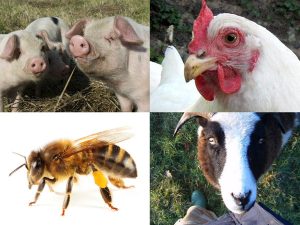
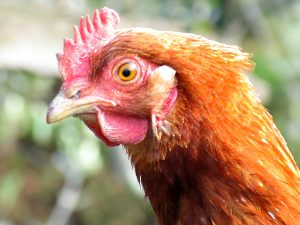
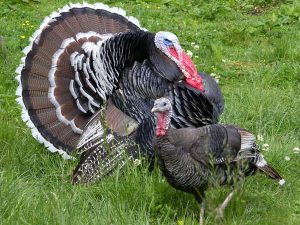
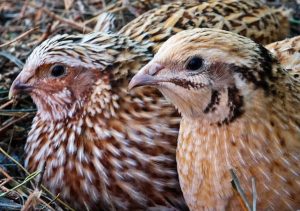

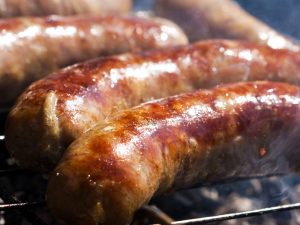
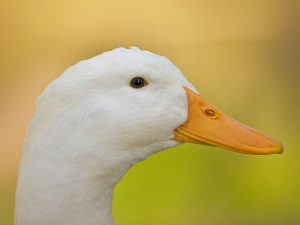
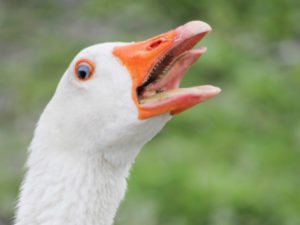
7 Comments
Thank you so much for this terrific article! Yes, Guineas are tons more fun than chickens, and often more practical. The noise sounds like a squeaky pump that needs oiling, a bit annoying sometimes, but great for drowning out other ambient noise eg traffic.
Worth noting that by the time you find the eggs they may be a bit old. You need to float them in water to weed out the ‘off’ ones, and the rest will make excellent pickled eggs. Which could be sold in jars to the local pub. The shells are really hard, designed to be trodden on by elephants and not break. So to crack them, hard boiling (at least 10 mins.) and bashing with a light hammer is the best way. The birds themselves are hilarious, though neighbours may think you’re breeding vultures ….
Thanks for your comment and the tip about the eggs!
Can some one help me?I have four young Guinea fowl and eight chickens. Our chickens go to bed at night in a hen house but the guinea fowl are just sleeping huddled together on the ground. We had old guinea foul that used to roost in trees. Does anyone know why our new ones are not? The outside area they’re in is enclosed by a fence but I’m still worried that predators could get in and get them.
Any help would be greatly appreciated
Thanks
John
Hi John, I often have the same problem when introducing young birds to my breeding stock, despite there being plenty of room to perch, they choose to sit on the ground. I find that over time they get the idea and will go up to roost at night. I have also helped them to get the idea by picking them up and putting them on the perches, you could try that.
Can you give tips on catching guineas when it’s time for slaughter?
Hello Susan, I find that it is best to catch the birds after dark, if they are in a building you can grab them off their perches, otherwise I use a landing net (normally for fishing) which has a very long telescopic handle which allows me to get the birds out of trees.
Thank you so much for the useful information to someone like me who wants to start farming about guinea fowl . It was much helpful.